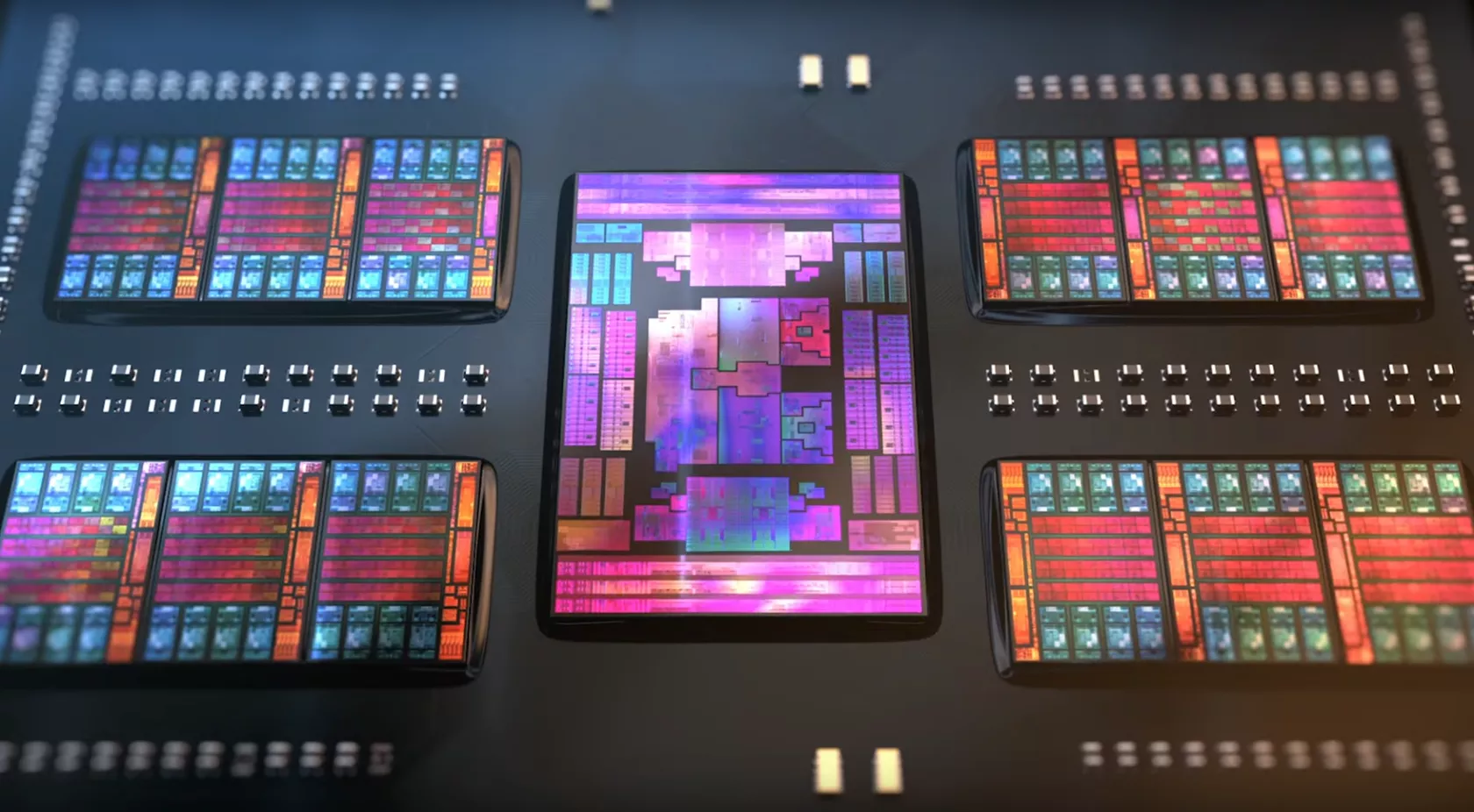In context: AMD took the audience on a roller coaster ride as it unveiled the fourth generation of Epyc data center processors at a live event last week. The presenters hurled number after number at the audience the whole way through, so buckle up as we break them down.
We should start with the name of the series: 9004, following on from 7003, 7002, and 7001. Why the nine? Not sure, but the trailing four is a reference to both the generation and the architecture, Zen 4. The codename for the series is/was Genoa, continuing AMD's tradition of naming Epyc series after Italian cities, which in the past has included Milan, Rome, and Naples.
AMD has also developed an affinity for the number five. Eight channels of DDR4 have become twelve channels of DDR5-4800 (for up to 6 TB per socket), and 128 lanes of PCIe 4.0 have given way to 128 lanes of PCIe 5.0 and 64 lanes of CXL 1.1+. The series also switches from TSMC 7nm to 5nm and adopts a new socket, called SP5 (LGA 6096). And lastly, AMD finally joins Intel with support for the AVX-512 instruction set.
| Model | Cores / Threads | Base / Boost Clock | Default TDP | Price (USD)* |
|---|---|---|---|---|
| Epyc 9654 | 96 / 192 | 2.40 / 3.70 GHz | 360W | $11,805 |
| Epyc 9654P | 96 / 192 | 2.40 / 3.70 GHz | 360W | $10,625 |
| Epyc 9634 | 84 / 168 | 2.25 / 3.70 GHz | 290W | $10,304 |
| Epyc 9554 | 64 / 128 | 3.10 / 3.75 GHz | 360W | $9,087 |
| Epyc 9554P | 64 / 128 | 3.10 / 3.75 GHz | 360W | $7,104 |
| Epyc 9534 | 64 / 128 | 2.45 / 3.70 GHz | 280W | $8,803 |
AMD announced 18 models in total (tabulated above and below). They span from 16 cores to 96 and have suffixes that denote their type: F, for fast and inefficient; P, for single-socket only; and no suffix, for normal and dual-socket. AMD shared far more detailed specs than we could fit here, things like cache capacities and configurable TDPs, so if you're interested, start with AMD's data sheet and then check out their documentation page for Genoa.
| Model | Cores / Threads | Base / Boost Clock | Default TDP | Price (USD)* |
|---|---|---|---|---|
| Epyc 9474F | 48 / 96 | 3.60 / 4.10 GHz | 360W | $6,780 |
| Epyc 9454 | 48 / 96 | 2.75 / 3.80 GHz | 290W | $5,225 |
| Epyc 9454P | 48 / 96 | 2.75 / 3.80 GHz | 290W | $4,598 |
| Epyc 9374F | 32 / 64 | 3.85 / 4.30 GHz | 320W | $4,850 |
| Epyc 9354 | 32 / 64 | 3.25 / 3.80 GHz | 280W | $3,420 |
| Epyc 9354P | 32 / 64 | 3.25 / 3.80 GHz | 280W | $2,730 |
| Epyc 9334 | 32 / 64 | 2.70 / 3.90 GHz | 210W | $2,990 |
AMD is claiming that Zen 4 has a ~14% IPC advantage over Zen 3 in server scenarios. It says the uplift is attributable to a doubling of the L2 cache capacity to 1 MB and improvements in the front end, branch prediction, load/store, and the execution engine. Genoa also more than doubles the theoretical memory bandwidth of each socket from 205 GB/s to 461 GB/s.
Added with the slightly higher clock speed and the vastly increased core count of the 9654, the new flagship is 1.9x faster than the previous one, according to AMD, which used the Java-based SPECjbb 2015 tool as a benchmark. Of course, the 9654 costs $11,805, and the 64-core 7763 costs a third less at $7,890, but the Genoa part is still better value.
| Model | Cores / Threads | Base / Boost Clock | Default TDP | Price (USD)* |
|---|---|---|---|---|
| Epyc 9274F | 24 / 48 | 4.05 / 4.30 GHz | 320W | $3,060 |
| Epyc 9254 | 24 / 48 | 2.90 / 4.14 GHz | 200W | $2,299 |
| Epyc 9224 | 24 / 48 | 2.50 / 3.70 GHz | 200W | $1,825 |
| Epyc 9174F | 16 / 32 | 4.10 / 4.40 GHz | 320W | $3,850 |
| Epyc 9124 | 16 / 32 | 3.00 / 3.70 GHz | 200W | $1,083 |
If you're not sold on AMD's cherry-picked numbers, Phoronix has a comprehensive launch day review of the 9654 and the 9554. It's worth a read, but the bottom line says that the new Epyc parts come out on top in every multi-core benchmark and land amidst the Intel Xeon parts in light single-threaded workloads. Genoa's flagships just "more" in every way: more performance, more power consumption, and more expensive. But they're so fast that they're still more efficient and better value than the competition.
